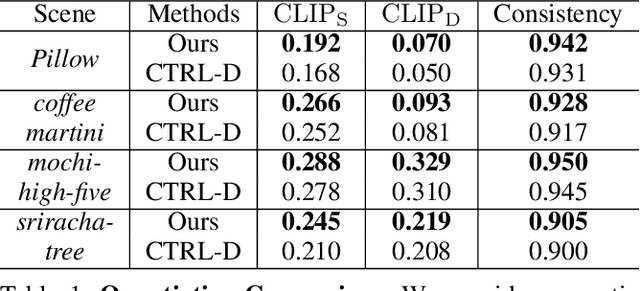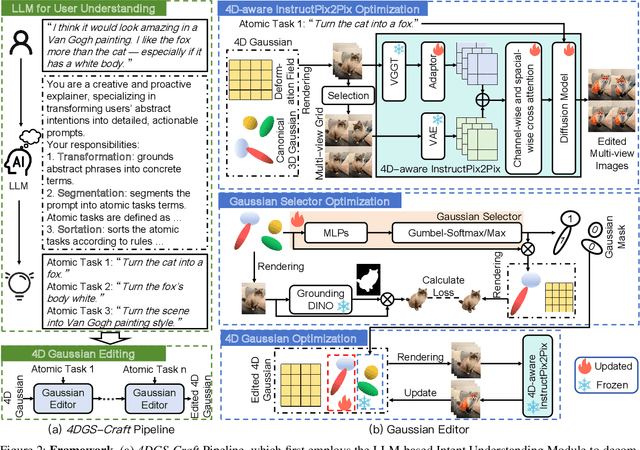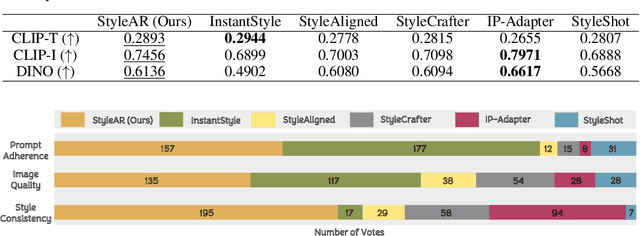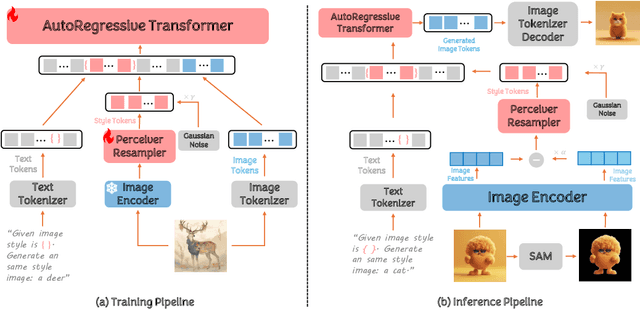Lei Liu
Accelerating Data Generation for Nonlinear temporal PDEs via homologous perturbation in solution space
Oct 24, 2025Abstract:Data-driven deep learning methods like neural operators have advanced in solving nonlinear temporal partial differential equations (PDEs). However, these methods require large quantities of solution pairs\u2014the solution functions and right-hand sides (RHS) of the equations. These pairs are typically generated via traditional numerical methods, which need thousands of time steps iterations far more than the dozens required for training, creating heavy computational and temporal overheads. To address these challenges, we propose a novel data generation algorithm, called HOmologous Perturbation in Solution Space (HOPSS), which directly generates training datasets with fewer time steps rather than following the traditional approach of generating large time steps datasets. This algorithm simultaneously accelerates dataset generation and preserves the approximate precision required for model training. Specifically, we first obtain a set of base solution functions from a reliable solver, usually with thousands of time steps, and then align them in time steps with training datasets by downsampling. Subsequently, we propose a "homologous perturbation" approach: by combining two solution functions (one as the primary function, the other as a homologous perturbation term scaled by a small scalar) with random noise, we efficiently generate comparable-precision PDE data points. Finally, using these data points, we compute the variation in the original equation's RHS to form new solution pairs. Theoretical and experimental results show HOPSS lowers time complexity. For example, on the Navier-Stokes equation, it generates 10,000 samples in approximately 10% of traditional methods' time, with comparable model training performance.
KORE: Enhancing Knowledge Injection for Large Multimodal Models via Knowledge-Oriented Augmentations and Constraints
Oct 22, 2025Abstract:Large Multimodal Models encode extensive factual knowledge in their pre-trained weights. However, its knowledge remains static and limited, unable to keep pace with real-world developments, which hinders continuous knowledge acquisition. Effective knowledge injection thus becomes critical, involving two goals: knowledge adaptation (injecting new knowledge) and knowledge retention (preserving old knowledge). Existing methods often struggle to learn new knowledge and suffer from catastrophic forgetting. To address this, we propose KORE, a synergistic method of KnOwledge-oRientEd augmentations and constraints for injecting new knowledge into large multimodal models while preserving old knowledge. Unlike general text or image data augmentation, KORE automatically converts individual knowledge items into structured and comprehensive knowledge to ensure that the model accurately learns new knowledge, enabling accurate adaptation. Meanwhile, KORE stores previous knowledge in the covariance matrix of LMM's linear layer activations and initializes the adapter by projecting the original weights into the matrix's null space, defining a fine-tuning direction that minimizes interference with previous knowledge, enabling powerful retention. Extensive experiments on various LMMs, including LLaVA-v1.5-7B, LLaVA-v1.5-13B, and Qwen2.5-VL-7B, show that KORE achieves superior new knowledge injection performance and effectively mitigates catastrophic forgetting.
4DGS-Craft: Consistent and Interactive 4D Gaussian Splatting Editing
Oct 02, 2025



Abstract:Recent advances in 4D Gaussian Splatting (4DGS) editing still face challenges with view, temporal, and non-editing region consistency, as well as with handling complex text instructions. To address these issues, we propose 4DGS-Craft, a consistent and interactive 4DGS editing framework. We first introduce a 4D-aware InstructPix2Pix model to ensure both view and temporal consistency. This model incorporates 4D VGGT geometry features extracted from the initial scene, enabling it to capture underlying 4D geometric structures during editing. We further enhance this model with a multi-view grid module that enforces consistency by iteratively refining multi-view input images while jointly optimizing the underlying 4D scene. Furthermore, we preserve the consistency of non-edited regions through a novel Gaussian selection mechanism, which identifies and optimizes only the Gaussians within the edited regions. Beyond consistency, facilitating user interaction is also crucial for effective 4DGS editing. Therefore, we design an LLM-based module for user intent understanding. This module employs a user instruction template to define atomic editing operations and leverages an LLM for reasoning. As a result, our framework can interpret user intent and decompose complex instructions into a logical sequence of atomic operations, enabling it to handle intricate user commands and further enhance editing performance. Compared to related works, our approach enables more consistent and controllable 4D scene editing. Our code will be made available upon acceptance.
Soft Graph Transformer for MIMO Detection
Sep 16, 2025



Abstract:We propose the Soft Graph Transformer (SGT), a Soft-Input-Soft-Output neural architecture tailored for MIMO detection. While Maximum Likelihood (ML) detection achieves optimal accuracy, its prohibitive exponential complexity renders it impractical for real-world systems. Conventional message passing algorithms offer tractable alternatives but rely on large-system asymptotics and random matrix assumptions, both of which break down under practical implementations. Prior Transformer-based detectors, on the other hand, fail to incorporate the MIMO factor graph structure and cannot utilize decoder-side soft information, limiting their standalone performance and their applicability in iterative detection-decoding (IDD). To overcome these limitations, SGT integrates message passing directly into a graph-aware attention mechanism and supports decoder-informed updates through soft-input embeddings. This design enables effective soft-output generation while preserving computational efficiency. As a standalone detector, SGT closely approaches ML performance and surpasses prior Transformer-based approaches.
When Large Multimodal Models Confront Evolving Knowledge:Challenges and Pathways
May 30, 2025Abstract:Large language/multimodal models (LLMs/LMMs) store extensive pre-trained knowledge but struggle to maintain consistency with real-world updates, making it difficult to avoid catastrophic forgetting while acquiring evolving knowledge. Previous work focused on constructing textual knowledge datasets and exploring knowledge injection in LLMs, lacking exploration of multimodal evolving knowledge injection in LMMs. To address this, we propose the EVOKE benchmark to evaluate LMMs' ability to inject multimodal evolving knowledge in real-world scenarios. Meanwhile, a comprehensive evaluation of multimodal evolving knowledge injection revealed two challenges: (1) Existing knowledge injection methods perform terribly on evolving knowledge. (2) Supervised fine-tuning causes catastrophic forgetting, particularly instruction following ability is severely compromised. Additionally, we provide pathways and find that: (1) Text knowledge augmentation during the training phase improves performance, while image augmentation cannot achieve it. (2) Continual learning methods, especially Replay and MoELoRA, effectively mitigate forgetting. Our findings indicate that current knowledge injection methods have many limitations on evolving knowledge, which motivates further research on more efficient and stable knowledge injection methods.
Autoregressive Meta-Actions for Unified Controllable Trajectory Generation
May 29, 2025



Abstract:Controllable trajectory generation guided by high-level semantic decisions, termed meta-actions, is crucial for autonomous driving systems. A significant limitation of existing frameworks is their reliance on invariant meta-actions assigned over fixed future time intervals, causing temporal misalignment with the actual behavior trajectories. This misalignment leads to irrelevant associations between the prescribed meta-actions and the resulting trajectories, disrupting task coherence and limiting model performance. To address this challenge, we introduce Autoregressive Meta-Actions, an approach integrated into autoregressive trajectory generation frameworks that provides a unified and precise definition for meta-action-conditioned trajectory prediction. Specifically, We decompose traditional long-interval meta-actions into frame-level meta-actions, enabling a sequential interplay between autoregressive meta-action prediction and meta-action-conditioned trajectory generation. This decomposition ensures strict alignment between each trajectory segment and its corresponding meta-action, achieving a consistent and unified task formulation across the entire trajectory span and significantly reducing complexity. Moreover, we propose a staged pre-training process to decouple the learning of basic motion dynamics from the integration of high-level decision control, which offers flexibility, stability, and modularity. Experimental results validate our framework's effectiveness, demonstrating improved trajectory adaptivity and responsiveness to dynamic decision-making scenarios. We provide the video document and dataset, which are available at https://arma-traj.github.io/.
StyleAR: Customizing Multimodal Autoregressive Model for Style-Aligned Text-to-Image Generation
May 26, 2025



Abstract:In the current research landscape, multimodal autoregressive (AR) models have shown exceptional capabilities across various domains, including visual understanding and generation. However, complex tasks such as style-aligned text-to-image generation present significant challenges, particularly in data acquisition. In analogy to instruction-following tuning for image editing of AR models, style-aligned generation requires a reference style image and prompt, resulting in a text-image-to-image triplet where the output shares the style and semantics of the input. However, acquiring large volumes of such triplet data with specific styles is considerably more challenging than obtaining conventional text-to-image data used for training generative models. To address this issue, we propose StyleAR, an innovative approach that combines a specially designed data curation method with our proposed AR models to effectively utilize text-to-image binary data for style-aligned text-to-image generation. Our method synthesizes target stylized data using a reference style image and prompt, but only incorporates the target stylized image as the image modality to create high-quality binary data. To facilitate binary data training, we introduce a CLIP image encoder with a perceiver resampler that translates the image input into style tokens aligned with multimodal tokens in AR models and implement a style-enhanced token technique to prevent content leakage which is a common issue in previous work. Furthermore, we mix raw images drawn from large-scale text-image datasets with stylized images to enhance StyleAR's ability to extract richer stylistic features and ensure style consistency. Extensive qualitative and quantitative experiments demonstrate our superior performance.
Artificial Intelligence Bias on English Language Learners in Automatic Scoring
May 15, 2025Abstract:This study investigated potential scoring biases and disparities toward English Language Learners (ELLs) when using automatic scoring systems for middle school students' written responses to science assessments. We specifically focus on examining how unbalanced training data with ELLs contributes to scoring bias and disparities. We fine-tuned BERT with four datasets: responses from (1) ELLs, (2) non-ELLs, (3) a mixed dataset reflecting the real-world proportion of ELLs and non-ELLs (unbalanced), and (4) a balanced mixed dataset with equal representation of both groups. The study analyzed 21 assessment items: 10 items with about 30,000 ELL responses, five items with about 1,000 ELL responses, and six items with about 200 ELL responses. Scoring accuracy (Acc) was calculated and compared to identify bias using Friedman tests. We measured the Mean Score Gaps (MSGs) between ELLs and non-ELLs and then calculated the differences in MSGs generated through both the human and AI models to identify the scoring disparities. We found that no AI bias and distorted disparities between ELLs and non-ELLs were found when the training dataset was large enough (ELL = 30,000 and ELL = 1,000), but concerns could exist if the sample size is limited (ELL = 200).
FedADP: Unified Model Aggregation for Federated Learning with Heterogeneous Model Architectures
May 10, 2025Abstract:Traditional Federated Learning (FL) faces significant challenges in terms of efficiency and accuracy, particularly in heterogeneous environments where clients employ diverse model architectures and have varying computational resources. Such heterogeneity complicates the aggregation process, leading to performance bottlenecks and reduced model generalizability. To address these issues, we propose FedADP, a federated learning framework designed to adapt to client heterogeneity by dynamically adjusting model architectures during aggregation. FedADP enables effective collaboration among clients with differing capabilities, maximizing resource utilization and ensuring model quality. Our experimental results demonstrate that FedADP significantly outperforms existing methods, such as FlexiFed, achieving an accuracy improvement of up to 23.30%, thereby enhancing model adaptability and training efficiency in heterogeneous real-world settings.
3D Gaussian Splatting Data Compression with Mixture of Priors
May 06, 2025Abstract:3D Gaussian Splatting (3DGS) data compression is crucial for enabling efficient storage and transmission in 3D scene modeling. However, its development remains limited due to inadequate entropy models and suboptimal quantization strategies for both lossless and lossy compression scenarios, where existing methods have yet to 1) fully leverage hyperprior information to construct robust conditional entropy models, and 2) apply fine-grained, element-wise quantization strategies for improved compression granularity. In this work, we propose a novel Mixture of Priors (MoP) strategy to simultaneously address these two challenges. Specifically, inspired by the Mixture-of-Experts (MoE) paradigm, our MoP approach processes hyperprior information through multiple lightweight MLPs to generate diverse prior features, which are subsequently integrated into the MoP feature via a gating mechanism. To enhance lossless compression, the resulting MoP feature is utilized as a hyperprior to improve conditional entropy modeling. Meanwhile, for lossy compression, we employ the MoP feature as guidance information in an element-wise quantization procedure, leveraging a prior-guided Coarse-to-Fine Quantization (C2FQ) strategy with a predefined quantization step value. Specifically, we expand the quantization step value into a matrix and adaptively refine it from coarse to fine granularity, guided by the MoP feature, thereby obtaining a quantization step matrix that facilitates element-wise quantization. Extensive experiments demonstrate that our proposed 3DGS data compression framework achieves state-of-the-art performance across multiple benchmarks, including Mip-NeRF360, BungeeNeRF, DeepBlending, and Tank&Temples.
 Add to Chrome
Add to Chrome Add to Firefox
Add to Firefox Add to Edge
Add to Edge